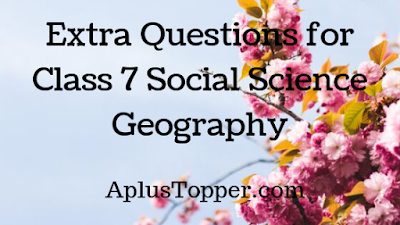Extra Questions for Class 7 Social Science Civics Chapter 9

Extra Questions for Class 7 Social Science Civics Chapter 9 Indian Constitution recognises all Indians as equal before the law and states that no person can be discriminated against because of their religion, sex, caste or whether they are rich or poor. There is a long list of people’s struggles in history. Equality does not extend to all people’s lives in our country. While old struggles continue, new struggles have emerged as people are facing new challenges due to urbanisation and industrialization. In a democracy, there are always communities and individuals trying to push the idea of democracy and push for a greater recognition of equality. People initiate struggles to gain equal rights, treat tment and respect with others. Marginalised sections wage struggles to get them heard and put forward their demands. Mass movements or struggles mean to put pressure on the government to redress their issues. Please refer Extra Questions for Class 7 Social Science Civics Chapter 9 f...









































